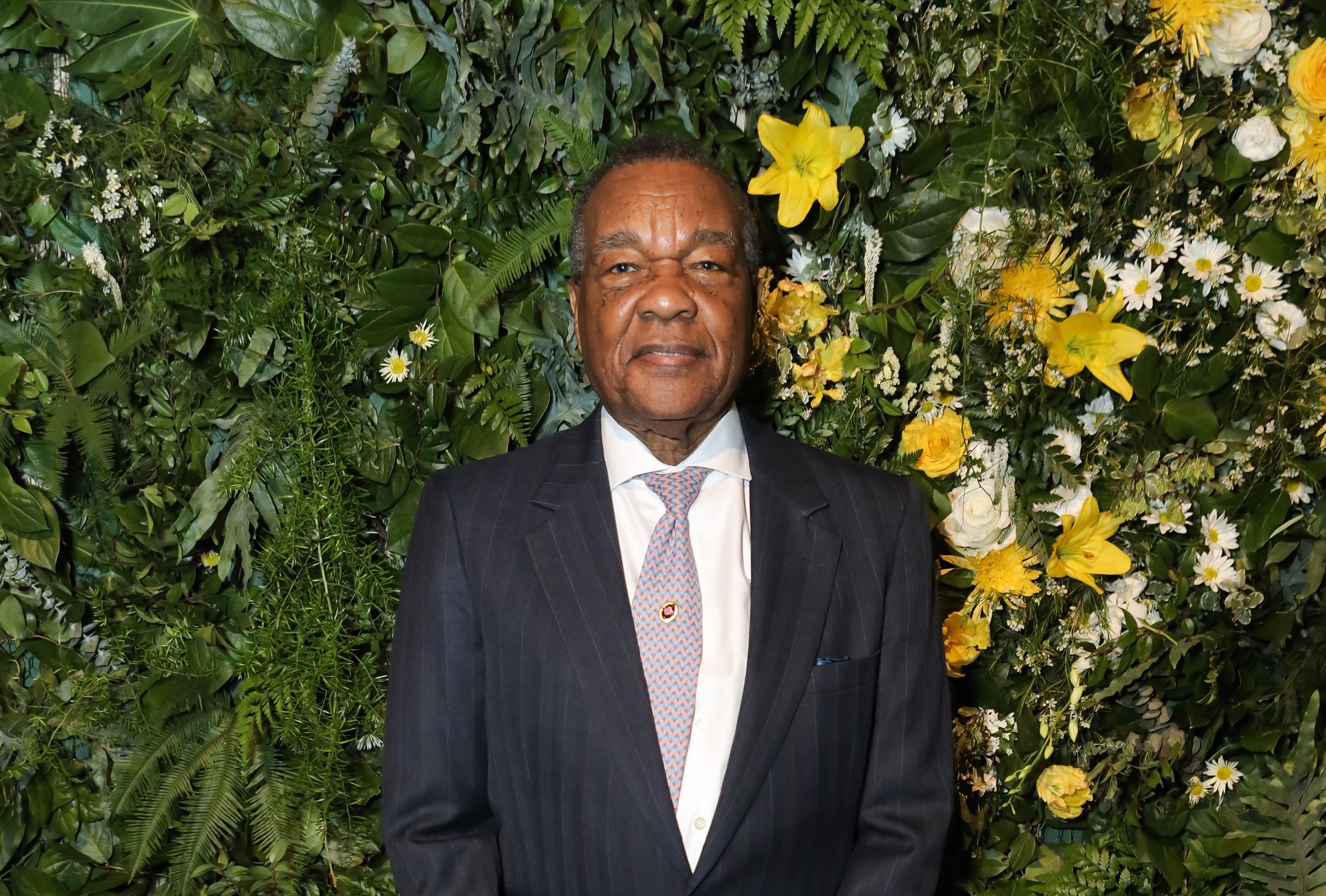
The influential artist, curator, and scholar David Driskell has died at the age of 88 in the hospital near his home in Hyattsville, Maryland. News of his passing was announced by the David C. Driskell Center for the Study of the Visual Arts and Culture of African Americans and the African Diaspora at the University of Maryland.
The cause of death was double pneumonia due to complications of the coronavirus, according to his dealer, New York’s DC Moore Gallery. “All of us at DC Moore have been graced by David’s generous spirit, affirmation of life, wisdom, and force of his convictions,” said the gallery in a statement. “David’s art, words, and actions were intertwined, inseparable, and inspirational to us in our daily lives and interactions with others.”
Driskell taught at the University of Maryland from 1977 until his retirement in 1998, and the center in his name was established in 2001. It is now a leading hub for scholarship about black artists.
“During these challenging times, it is difficult to mourn one individual, but we are here to honor his legacy and continue his work of supporting and promoting African American artists,” the center said in a statement. “Once appropriate, we will ensure that our community has the chance to mourn and celebrate the life of a man who meant so much to so many of us.”
David Driskill, Jazz Singer (Lady of Leisure, Fox), 1974. Courtesy of DC Moore Gallery.
Born in 1931, Driskell studied at the Skowhegan School of Painting and Sculpture in Maine during the summer of 1953. He later lived part-time in Falmouth, Maine, painting among the pine trees, a longtime source of artistic inspiration.
Driskell earned a BFA with a minor in art history at Howard University in 1955, and an MFA at Catholic University in 1961. Both schools are in Washington, DC. His mentor in undergrad was James A. Porter, a pioneering art historian who helped shape the trajectory of Driskell’s career.
“You have a good mind so you can’t just be a painter; you’re going to have to help define the field and keep the tradition going,'” Driskell remembered Porter telling him.
David C. Driskell painting in the basement of Magnolia Deloatch’s house at 3919 Benning Road, North East, Washington, DC (1953). Photo courtesy of the David C. Driskell Papers at the David C. Driskell Center at the University of Maryland, College Park.
As a curator, Driskell made many notable scholarly contributions. In 1976, he curated the groundbreaking traveling survey “Two Centuries of Black American Art: 1750–1950,” which debuted at the Los Angeles County Museum of Art. It featured the work of 63 artists.
Although LACMA asked Driskell to organize the show, he still had to win over its board.
“I said, ‘It just happens to be that white Americans have little or no knowledge about what black Americans have done in the visual arts. So this is an educational process for everybody,'” he recalled saying in 2009. “It was a mini-lecture on why we shouldn’t be looking at art in segments, yet we must do this for black culture because of the omissions.”
Driskell, who was also a collector, owned works by the likes of Alma Thomas, James Van Der Zee, and Sam Gilliam. The Newark Museum of Art presented an exhibition from his collection in 2001.
As an artist, Driskell has been represented by DC Moore gallery since 1995. His works are held by institutions including the High Museum of Art in Atlanta, the Pennsylvania Academy of the Arts in Philadelphia, the Studio Museum in Harlem, and the National Gallery of Art and the Library of Congress, both in Washington, DC. A 2021 retrospective of his work will appear at the High, Maine’s Portland Museum of Art, and the Phillips Collection, Washington, DC.
In 2000, Driskell was honored with a Presidential Medal of Honor in the Humanities and also earned the Skowhegan Lifetime Legacy Award in 2016. He was named a member of the American Academy of Arts and Sciences in 2018.
“The achievements of David C. Driskell are as grand as Mount Everest,” wrote Keith Morrison in the foreword to Julie McGee’s 2006 biography David C. Driskell: Artist and Scholar.
Among those paying tribute to Driskell on social media was artist Hank Willis Thomas. “Thank you for opening the doors for so many of us so gracefully, so beautifully, and so lovingly,” he wrote on Instagram. “May we continue to rise in your legacy.”